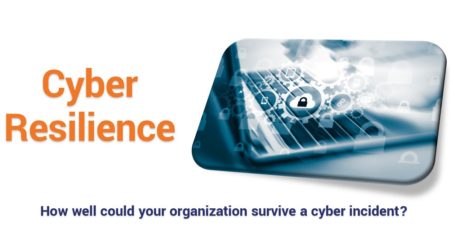
Cybersecurity refers to the processes and methods used to protect your organisation from a cyberattack; cyber resilience refers to your ability to deal with those threats.
An organisation’s ability to operate, function and recover from an attack determines its level of resilience. Although it is a relatively new term, cyber resilience has always been the intended outcome for cybersecurity.
Why cyber resilience is important
In the last 12 months, over four in ten businesses (43%) and two in ten charities (19%) have experienced a cybersecurity breach or attack.
No organisation is immune to cyberattacks, so cyber-resilience is an essential component of a sound security strategy. By recognising the importance of cyber resilience and deploying a cyber resilience programme, you can effectively:
- Deal with attacks
Cyberattacks constantly threaten organisations of all sizes, and cyber breaches can be devastating. Because of this, cyber resilience planning is essential. If a successful cyberattack happened to an organisation without a cyber resilience programme in place, damage and response time delays would significantly increase.
- Improve system security
A cyber resilience programme does more than just enable you to respond to an attack and recover as quickly as possible. It helps you design and deliver security strategies and services across your IT infrastructure. By integrating cyber resilience into your existing infrastructure, you will boost security across the board and reduce the likelihood of cyberattacks’ success.
- Reduce the cost of a cyber attack
The reality is there is always going to be the risk of a successful cyberattack, regardless of how suitable an organisation’s preventative measures are. The cost of a data breach for large enterprises is over £1 million. For SMEs, it is usually over £100k. Furthermore, a successful cyberattack can cause reputational damage to an organisation, leading to additional financial losses. If you minimise the impact, a cyberattack has, you also minimise the cost it has.
Where to start with cyber resilience
The first step to good cyber resilience is understanding your organisation’s existing processes and standards and how they currently protect and serve you. Once you know your processes’ and systems’ weaknesses, you can begin to integrate resilience into them.
The following steps are dependent on the above and include:
- the design and deployment of your resilience strategy and services across an organisation
- minimising the damage from a cyberattack, and
- enabling prompt response and recovery.